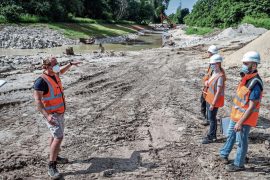Over the years, research has been done on how to detect and treat dementia early. Scientists have now discovered that the risk of developing dementia is associated with a slower walking speed.
A recently published study suggests that walking speed may provide information about possible dementia in older people. For this, researchers conducted a study with 16,855 subjects from Australia and the United States, who were on average 75 years old. Study data was collected between 2010 and 2017.
Dementia can be identified by walking speed
As part of the analysis, the researchers found that a simultaneous or simultaneous decrease in walking speed and cognitive abilities is associated with an increased risk of dementia. The results were published in the specialist journal “JAMA Network”.1 Subjects in whom none or only one feature is impaired are less likely to be affected by dementia.
To this end, the scientists collected data as part of the ASPREE study (Aspirin in Reducing Events in the Elderly). Subjects were recruited from 2010 to 2014 and anonymous trials were conducted until 2017. The data was then analyzed between October 2020 and November 2021. At the start of the study, about 17,000 test individuals had no dementia, no heart disease, no physical disability and a life expectancy of more than five years.
Also interesting: Dementia – what symptoms should you see a doctor for?
These test methods were used
Over the course of seven years, the subjects had to take various tests. Walking speed was measured at the start of the study in the second, fourth, sixth and final year. The examinees had to walk two short distances of three meters each in the respective years. The results of the two walks were averaged and a walking or gait pattern was created.
Cognitive tests were performed at 1, 3, 5 years and at the end of the study. The methods involved were:
- Modified Mini-Mental Status (3MS) TestScreening test for dementia with questions on memory, arithmetic or orientation. (global sense)
- Hopkins Verbal Learning Test-Revised (HVLT-R): Memory Test (Memory)
- Symbolic Digitization Modalities (SDMT)Screening test to detect neurological dysfunction (processing speed)
- Controlled Verbal Word Association Test (COWAT-F):Test to check flow. (speech flow)
Also Interesting: A Factor That May Quickly Relieve Dementia Symptoms
two groups particularly affected
After completing the data analysis, subjects were divided into four groups.
- Group 1: a simultaneous decrease in walking speed and cognitive performance
- 2nd group: Moving backwards in gait pattern only
- Third group: regression in cognitive performance only
- Fourth group: no deterioration in both characteristics
Gait regression was defined as the loss of walking speed of more than 0.5 m/s within one year. The “hazard ratio” was also included to determine which of these had the greatest risk of dementia. This value shows, inter alia, how high the mortality rate of one group is compared to the other group.2 A possible dementia depends not only on walking speed, but also on specific, cognitive decline.
It quickly became apparent that the group with poor walking speed and decreased memory function (HVLT-R) had a risk ratio of 24.7. Next comes the group with 22.2 with a poor gait pattern and weak global feel. Then come subjects with poor gait and decreased speech fluency (4.7). The least affected are those running with 4.3 and reduced processing speed.
The scientists came to the conclusion that people who walk about five percent slower per year and at the same time lose cognitive ability, have an increased risk of developing dementia.
sources say

Web guru. Amateur thinker. Unapologetic problem solver. Zombie expert. Hipster-friendly travel geek. Social mediaholic.





